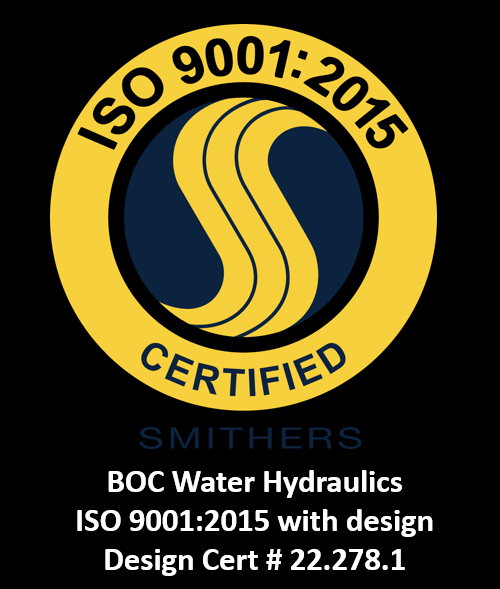Product Brochures are Located in the Products Tab
Blog Layout
New Investment, New Markets for Salem Company
October 15, 2024
Business Journal daily
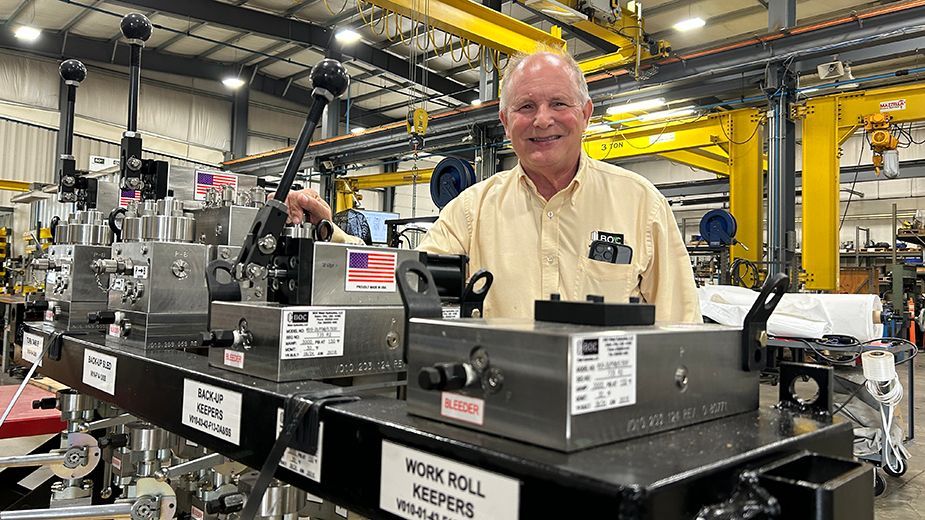
MidOctober 2024 Dan O'Brien Click Here to View the Article
SALEM, Ohio – Todd Olson calls it his company’s “first seven-figure investment” as he walks toward a towering computer numerical control – or CNC – horizontal milling and boring machine.
The new mill, capable of interchanging 60 tools, stands to substantially improve the competitive edge of BOC Water Hydraulics Inc. In the process, it should open new markets and opportunities for the Salem-based company.
“It opens up larger-scale CNC manufacturing,” says Olson, president and owner of the company. “That’s the direction where we see things going, where the growth opportunities are.”
Olson says these opportunities lay in producing stainless steel blocks used for high-pressure applications, particularly in the steel industry. “It opens the doors to new markets and allows us to aggressively bid and go after the high-pressure block business.”
BOC Water Hydraulics, founded in 1993 by Olson’s father, Don, designs and manufactures water hydraulics valves that are mostly used in the steel industry and the oil and gas business. While the company has always had the capabilities to produce large-scale units, the new CNC center – manufactured by Korea-based HNK – can manufacture these components much faster and far more efficiently.
“It’s able to do some of the higher-end repetitious machining,” Olson says. The company recently bid a project for Nucor Steel in West Virginia that requires six large valve blocks – precisely the type of job that this new investment is designed to tackle. “I can now compete in a space where I couldn’t before,” he says.
Ken Best says the CNC milling and boring machine can accommodate larger jobs and interchange 60 different tools.
Ken Best, a machinist who has worked at BOC for eight years, has trained on the new equipment since it was first commissioned in April. On a late Wednesday afternoon, Best was busy at the control panel of the mill, performing a horizontal “face milling” operation for a customer. The HNK HB-130, he says, has a long-nose spindle and a wide table that accommodates larger parts and steel blocks, capable of high-precision machining.
“The main thing is getting used to the eye-to-guide controls,” says Best, a machinist since he graduated from high school. Once the work is finished, the veteran machinist commands an automated process where an arm moves into position, retrieves the machine tool, and places it on a vertical belt in its appropriate nest. When he selects another job, the vertical belt moves a new tool in line with the automatic picker, which grasps the component and fits it snugly into the spindle.
Therefore, Olson says, the new investment could dramatically improve throughput at BOC. “We’ve found that we can reduce our actual time on machine by 60% and 70%,” he says. “However, the cost per hour is much higher.” The objective is to increase volume on the new unit, which in the end equates to higher margins.
Olson says the company is slowly building business for the new line. “What we like to see is a part on the machine and material sitting in front of the machine ready to go,” he says. “This is just getting started.”
Solid Business in the Steel Sector
Olson says BOC products supply the steel, oil and gas industries with valve stands and other high-pressure hydraulic systems that are used, for example, in descaling operations in steel mills or the “decoking” process in the oil and gas industry.
The machine completes a “face milling” operation on a stainless block that will be used to support hydraulic high-pressure equipment used in the steel industry.
The steel sector remains resilient despite some volatility and jitters related to the fate of U.S. Steel and its potential acquisition by Nippon Steel of Japan. Many of BOC’s products are used in hydraulic descaling operations, where water is shot at high-pressure to remove scale residue after steel is hot rolled, improving its quality.
“We’ve held our own given industry volatility,” Olson says. “There’s some apprehension on the ‘buy’ side right now. Auto inventory is up. So there are some forces out there that are making people pause.”
The key for the steel market is for prices to remain sufficiently high so that manufacturers can reinvest in new equipment, Olson says. Tariffs placed on foreign steel during the Trump administration and continued during the Biden presidency have overall elicited positive results for domestic mills.
“The biggest thing is whether they’ll hold their pricing,” he says. “If they start to fall, maintenance budgets go away. My sense is that pricing has maintained at a reasonable level.”
The company manufactures components for the oil and gas industry as well, most specifically for the “decoking” process, in which companies test and clean steel pipe and tube using high-pressure water. “Then, there is a variety of other applications where water hydraulics sneak into the equation.”
Global Sales and Expansion
Between 10% and 15% of BOC’s business annually is devoted to exports, Olson says, and the company has secured customers in more than 15 countries. These include Argentina, Brazil, Australia, Canada, Chile, China, India, Japan, Mexico, Taiwan, and the United Kingdom.
“The international business is OK,” he says. “It’s still tough because the dollar is so strong.”
Nevertheless, Olson posits that the global market presents a wide range of possibilities. “I’m convinced there’s growth potential,” he says. “The U.S. is a small steel segment compared to the global steel industry.”
BOC has no desire to do business in China, he says. Emerging and developing markets such as India, however, could unveil new commercial streams for BOC. “In some of the developing markets, there does seem to be opportunities there.”
The company expanded in 2012, adding a new corporate office and a 15,000-square-foot manufacturing space that houses the new CNC operations. BOC owns 17 CNC machines, along with its share of old-school manual lathes and other devices.
“They do beautiful work,” he says.
Olson says the company has enjoyed solid growth over the last several years while noting, “This year it’s leveled off a bit.”
BOC employs 48, Olson says, adding that his company is fortunate to have a highly experienced workforce and younger employees willing to grow with the company.
Julie Needs, executive director of the Sustainable Opportunity Development Center, an economic development organization based in Salem, says BOC and Olson have been supportive of the SOD Center since it began 14 years ago.
Moreover, the company often partners with the organization on events that expose young people to careers in manufacturing, she says.
BOC partnered with the center on a program at Salem High School intended to draw interest to the manufacturing trades. Also, Olson and BOC are active in supporting the SOD training center, which opened in 2019.
“Since then, we’ve trained nearly 4,000 students,” Needs says. “Todd and BOC have been fantastic supporters for the local economic development community.”
Such interaction with young people is invaluable to developing the skilled workforce of tomorrow, Olson says.
Josh Sawyers, a machinist, has been with BOC for three years. “I’ve always been mechanical, working on things and tinkering in my garage,” he says.
He became aware of opportunities at BOC Water Hydraulics when he attended an open house at Mahoning County Career and Technical Center. “I met a gentleman who worked here and he was really excited about it,” he says. “I saw that I could work with my hands and make my own parts from start to finish. It’s something I’ve always been able to relate to.”
It’s employees such as Sawyers that Olson says represent the future of industry. “This is the next generation here,” he says, gesturing to the young machinist. “We’ve got some good ones.”
Pictured at top: Todd Olson, president and owner of BOC Water Hydraulics, shows a valve stand bound for a steel mill.
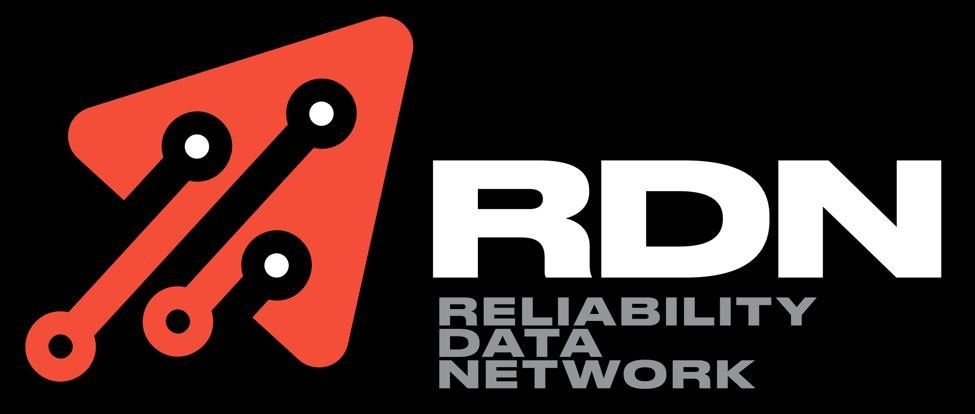
By Zack Himes
•
September 30, 2024
In an ongoing effort to provide high quality products and customer focused support, BOC is now featuring "Reliability Tracking" on all of its products, thanks to an exclusive agreement with Reliability Data Network (RDN). This agreement enables BOC to ship all products registered on RDN with a proprietary unique QR code. This QR code can be embedded with secure critical information such as technical drawings, operation manuals, and order details. Additionally, it allows for downstream tracking of performance and other reliability-based information such as parts consumption, maintenance tracking, preventative maintenance tracking and much more. "Tracking our valves and related equipment on RDN is a no brainer," BOC President & Owner Todd Olson stated. "We fully stand behind the products we manufacture and have an unrelenting approach to support our customers in any way possible. RDN gives us yet another tool to keep our customers happy and lets us work closer with them than ever before." RDN has already proved to be a very valuable tool for BOC customers, and we look forward to introducing it to many more throughout the coming months. If anyone is interested in learning more about the exclusive BOC & RDN partnership, and how it can provide positive impacts in your operations, contact us today!
March 27, 2020
References: (a) State of Ohio Department of Health ‘Stay at Home Order’ dated March 22, 2020, memorandum “Director's Order that All Persons Stay at Home Unless Engaged in Essential Work or Activity” (b) U.S. Department of Homeland Security Cybersecurity & Infrastructure Security Agency memorandum dated 19 March 2020 from Director Christopher C. Krebs, Identification of Essential Critical Infrastructure Workers during COVID-19 Response As we navigate together through this COVID-19 national crisis, I wanted to keep you updated on some recent developments. The State of Ohio issued a ‘Stay at Home’ order in reference (a) that outlined “all individuals currently living within the State of Ohio are ordered to stay at home or at their place of residence except as allowed in this Order.” After reviewing reference (a) and the guidelines the State of Ohio used from reference (b), it is determined that BOC Water Hydraulics is designated as an “essential business” and will remain open and supporting our customer’s needs. Reference(a) and reference (b) state “All businesses and operations in the State, except Essential Businesses and Operations as defined below , are required to cease all activities within the State except Minimum Basic Operations…” and specifically from the State of Ohio order “Para 12v. - Manufacture, distribution, and supply chain for critical products and industries. Manufacturing companies , distributors, and supply chain companies producing and supplying essential products and services in and for industries such as pharmaceutical, technology, biotechnology, healthcare, chemicals and sanitization, waste pickup and disposal, agriculture, food and beverage , transportation, energy, steel and steel products, petroleum and fuel , mining, construction, national defense , communications, as well as products used by other Essential Businesses and Operations.” BOC Water Hydraulics falls into (6) essential business and operating categories which are underlined in the preceding paragraph. Our critical essential business customers depend on us to supply products used for sustainment of their business operations; and BOC will continue to support them and 'stands ready' to meet the challenges that we all face as a result of COVD-19. BOC continues to take proactive steps to ensure the safety and well-being of our employees, as they are our most valuable asset. Following the health and safety guidelines issued by the State of Ohio and the Centers for Disease Control (CDC), BOC is exercising an abundance of caution and taking extra steps beyond our everyday measures to ensure we have the safest environment possible: BOC has ‘compartmentalized’ into small work teams on separate shifts in our machine shop and assembly departments; and anyone who can work from home, is doing just that. All BOC employees have read and understand the guidelines and requirements from the State of Ohio regarding Social Distancing and each employee conducts a daily health assessment every day. I can assure you, BOC Water Hydraulics is in compliance with all required and mandated guidelines and they are reinforced daily to all employees. At BOC Water Hydraulics, our entire Team stands ready to meet your needs and will remain fully committed to doing our part to support and assist you in sustaining your operations. Lastly, and for our customer, we appreciate you keeping us advised of any changes in the status of your operations. Call us anytime. Warm regards for the continued safety of you, your employees and your families. Todd Olson Owner/President
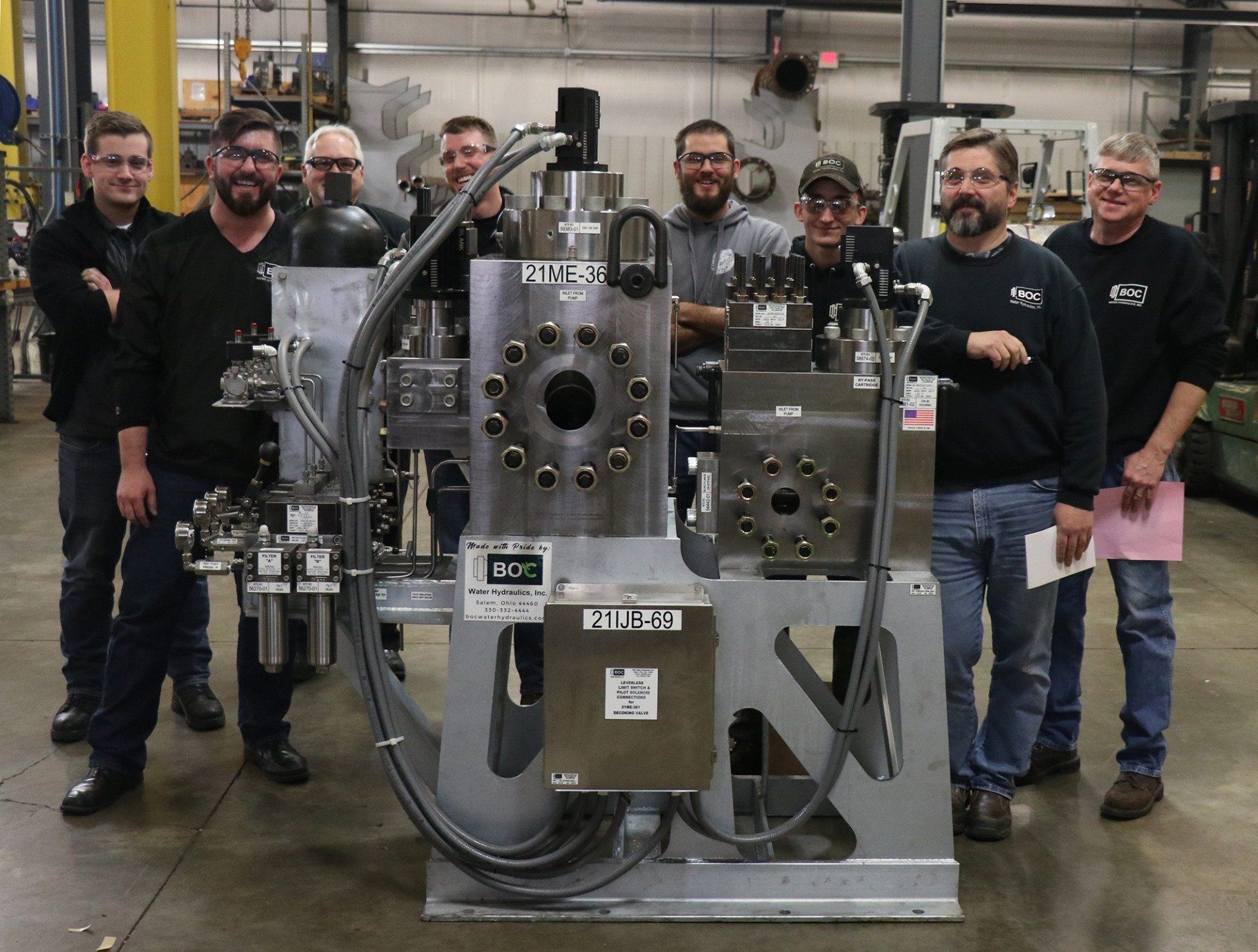
March 27, 2020
BOC added another Decoking Valve to our impressive installation base, when we recently shipped a 6 x 6 x 3 Decoker to a customer in Argentina. The project was headed up by a great group of BOC employees, including Ed Wrask who led the sales efforts, Jeff DeCort, Sam Trimm, and John Burr were the engineering and design experts, while Ethan Bostwick, Andy Sox, Gary Cox, and Zack Himes teamed up on the manufacturing, assembly and logistics efforts. Many more hands were involved with getting this valve from concept to operation, and we thank them all! The BOC Decoking Valve continues to be the industry leader in performance and reliability. To learn more about our Decoking Valves, please visit our DV Series webpage.

March 27, 2020
In front of a gathering of more than 125 people, consisting of current & past employees, customers, suppliers, and friends, BOC Owner & President Todd Olson offered remarks about being in business for 25 years and making it to this milestone. "It hasn't always been easy. It has taken a lot of passion, persistence, and patience, but we have built a strong company that produces high quality, dependable components for the steel and gas & oil industries." In his 15 minute speech, Todd took time to recognize every single BOC employee, noting how long they've been with the company and what their duties are. "The people are what makes BOC great. The ingenuity and work ethic of our team is second to none." After a catered lunch, BOC was presented with four different proclamations, one each from Congressman Bill Johnson, State Rep. Tim Ginter, the office of Senator Rob Portman, and Salem Mayor, John Berlin. Mayor Berlin's proclamation included the announcement that September 21, 2018 was officially known as "BOC Water Hydraulics Day" in the City of Salem. We want to thank everyone that attended, as well as everyone that sent regards and well wishes. It was a great day celebrating the past 25 years, and an exciting boost for the next 25. To see photos from the day, please visit: PHOTOS
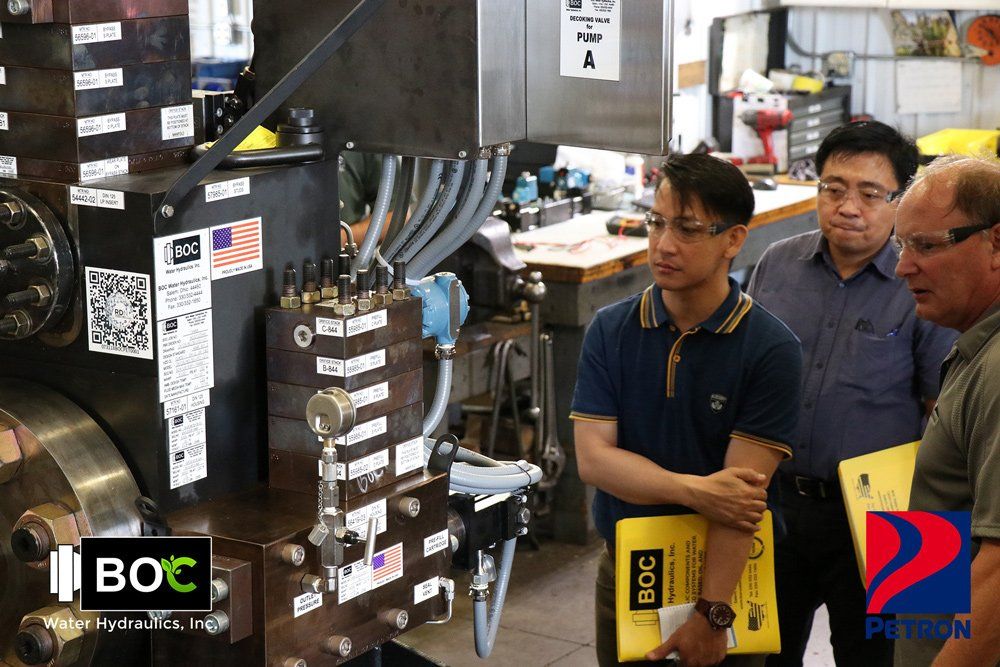
March 27, 2020
BOC has had the great pleasure of hosting representatives from the Philippines based Petron Corporation at our facility in Salem, Ohio. Mr. Domer Rubiano and Mr. Ronnie Guarin traveled to BOC to witness factory testing of the two decoking valves they ordered for their oil refining facility in the Philippines. Mr. Rubiano and Mr. Guarin spent three days with us going over all aspects of both decoking valves, including in-depth training, product animations, and rigorous high pressure testing. The two valves will be shipping at the end of July and will be installed in the coming months. We really enjoyed our time with Mr. Rubiano and Mr. Guarin and look forward to continuing our partnership with them and the rest of the Petron Corporation team. To learn more about BOC’s Decoking Valves, please visit here: BOC Decoking Valves

March 27, 2020
It is hard to believe, but we are rapidly approaching “Year 7” of the U.S. Army Corps of Engineers’ use of the shallow draft dredge, the MURDEN. The innovative dredge was built in Morgan City, Louisiana, and is maintained and operated by the USACE Wilmington, NC District. The main purpose of the MURDEN is to provide dredging along the Atlantic coast to provide safe and reliable maritime navigation for the U.S. Coast Guard and the many other vessels that travel the east coastline. What makes the MURDEN so unique was the trailblazing choice to use water hydraulics as its means to open and close the hopper. The MURDEN is a split-hull hopper, meaning the boat literally splits in two when it comes time to dump what it has dredged. Historically, dredge hoppers have been powered by oil hydraulic systems, but the MURDEN’s designers wanted to go with an environmentally safe choice after an oil hydraulic leak into the water, damaging the ecosystem. BOC Water Hydraulics was more than willing to help the builders with this vision. We designed and produced 16” cylinders with an 86” stroke to power the hopper. While it was a risk, as the first time it had ever been done, the risk has paid off considerably for the USACE. In its 7 years of use, the USACE has spent less than $1,000 maintaining the water hydraulic system and entirely eliminated any environmental concerns associated with operating an oil hydraulic system. While there was some initial apprehension from some at the USACE, nearly everyone is now on board with water hydraulics a useful method of hopper operation. As MURDEN’s Chief Engineer, David Cribbs, stated, “The system I doubted the most (water hydraulics) is ironically my most reliable.” For anyone working in the maritime industry, looking for an environmentally safe, and reliable system, please contact BOC today! We are more than willing to look at any application with you, to see how we can help you succeed!
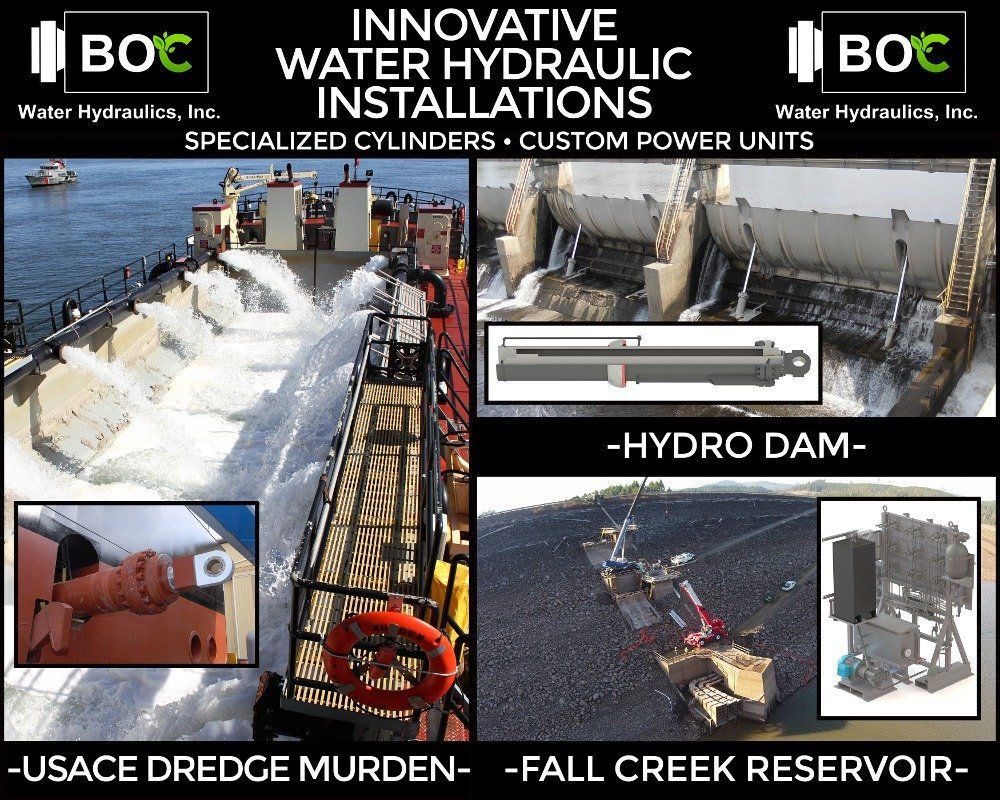
March 27, 2020
Building on our water hydraulics successes in the steel & aluminum and the gas & oil industries, we have proven results in the hydro power industry. Working with customers like the US Army Corps of Engineers, we have been a reliable partner for water hydraulics needs. Past projects like the USACE Dredge MURDEN and the Fall Creek Reservoir have given BOC the experience necessary for any water hydraulic based application. This is why we recently displayed at the HydroVision Expo in Minneapolis, Minnesota. As we continue to grow the hydro power segment of our business, we want those heavily involved in the industry to know how powerful water hydraulics can be, and how their application could benefit from our proven technologies. Our team spent the three days of the expo meeting with domestic and international companies and were able to spread the word about BOC and water hydraulics. We look forward to growing the relationships made during the show and serving their needs as their projects evolve.
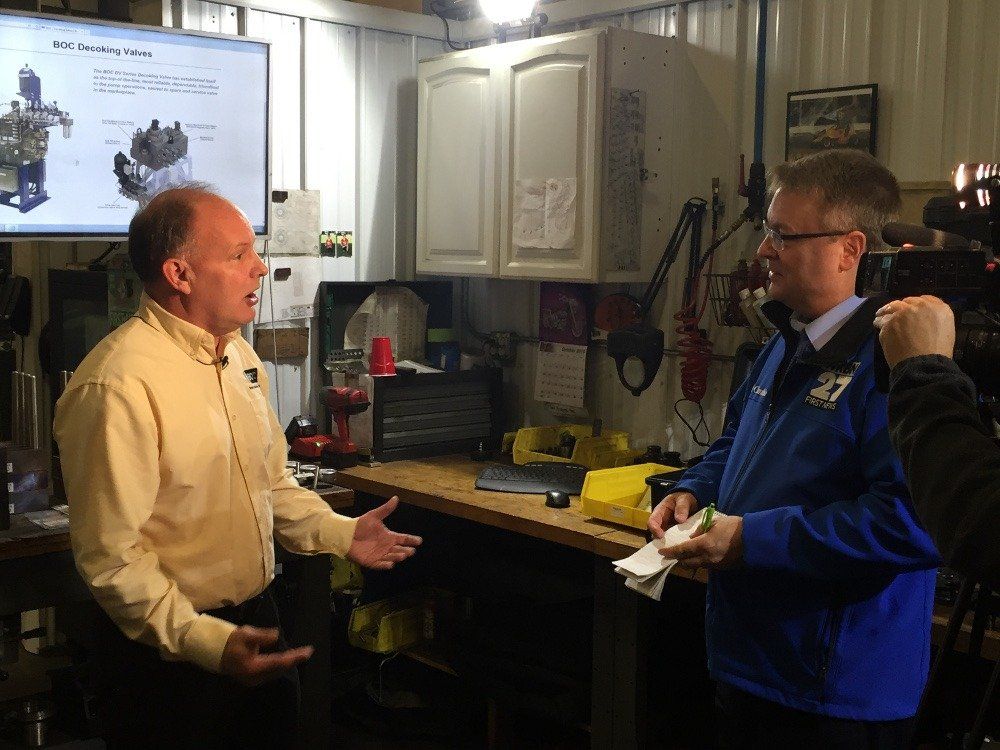
March 27, 2020
BOC resides in the Mahoning Valley, in Northeast Ohio. Once a manufacturing hotbed and major player in the steel industry, this area has seen a dramatic shift in the past few decades away from technical, heavy industry jobs. Conversely , exporting and the increasing demand of global markets for American products has allowed many manufacturers to stay competitive, relevant, and profitable. We recently had the pleasure of hosting Dave Sess from the local CBS affiliate, WKBN 27 Youngstown, to discuss exporting and it’s importance to our company. Dave spent a large part of an afternoon with BOC President and Owner Todd Olson to learn more about BOC and what role exporting takes in our day-to-day processes. As you will see in the video and article, Todd mentions how currency valuation, as well as global monetary policies, have a direct impact on manufacturers, not only in the Mahoning Valley, but the United States as a whole. On a daily basis the BOC team proudly manufactures some of the world’s most reliable heavy industry equipment and remains one of the most valuable suppliers in a competitive global market space. We look forward to more global opportunities as we finish out a very successful 2016 calendar year, gearing up for 2017! To view the article follow this link: http://wkbn.com/2016/10/28/valley-exports-could-revitalize-manufacturing-in-youngstown-area/
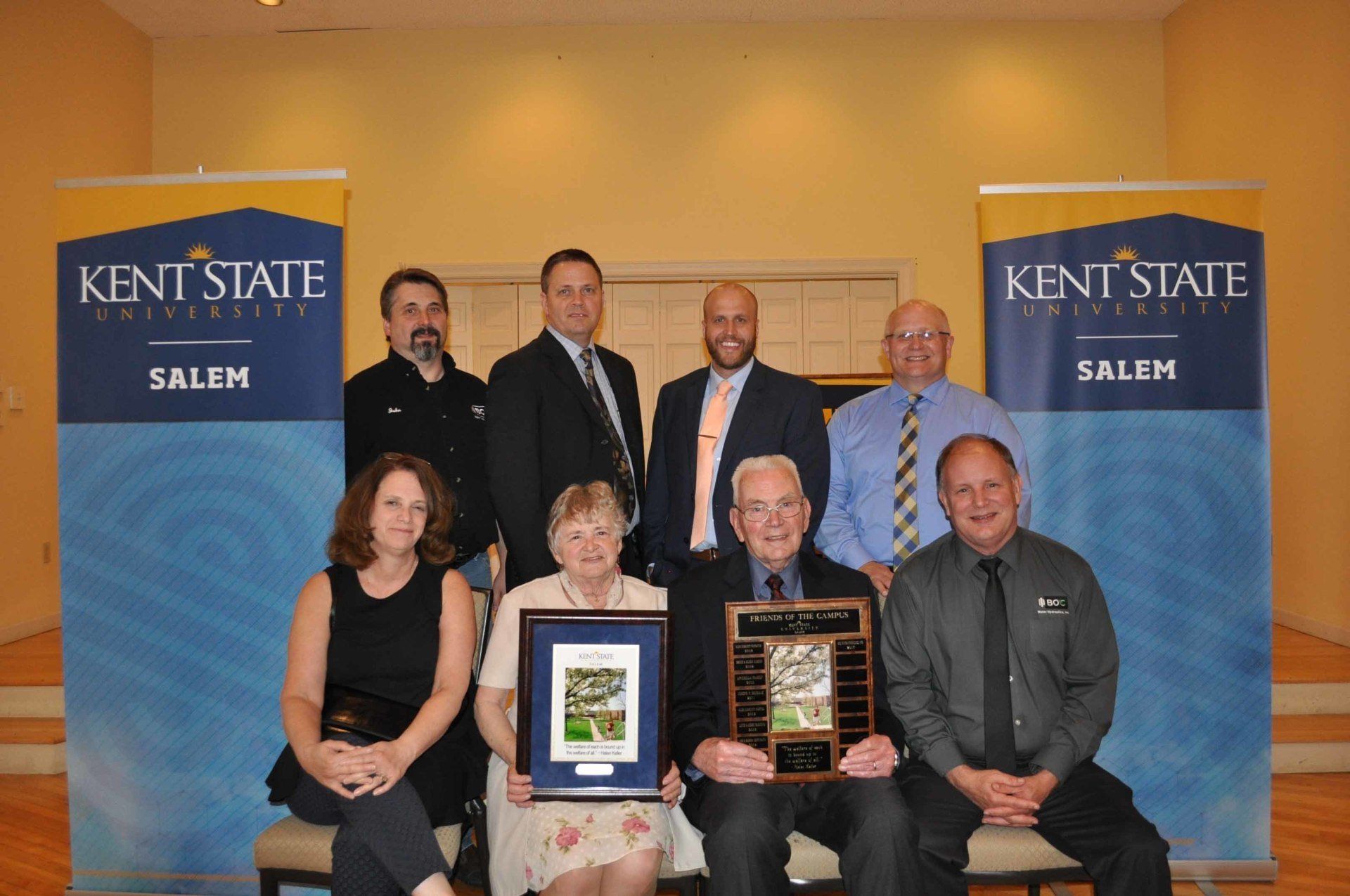
March 27, 2020
On Wednesday, April 26th, Kent State University Salem Campus held their annual Student Awards Dinner, honoring those students who showed great successes throughout the school year. It was a tremendous evening celebrating their hard work as awards and scholarships were handed out to students in many areas of concentration including nursing, horticulture, business, radiology, and more. At the end of the program, one more award was presented, this time to the BOC team. We were fortunate enough to be selected as the 2017 recipient of the prestigious “Friends of the Campus” award. This was the result of a partnership going back many years between BOC and the Kent State Salem branch. Owner Todd Olson, and the BOC team, has supported Kent Salem over the years through the Rural Scholars Program, job shadowing opportunities, and other mutually beneficial endeavors. Upon accepting the award, Todd shared some wisdom to the students in the room. The main theme of his message was to take advantage of the opportunities Kent Salem has provided. “Receiving a quality education, like you all have, is a great door opener. The sky is truly the limit for each and every one of you, so take the ball and run with it. And once you achieve your success, always remember how you got there and try to give a little bit back. You’ll find that is the most rewarding part of all.” We want to thank Kent Salem’s Interim Dean, Dr. David Dees, and the rest of the Kent State team for this award. We look forward to our continued partnership and wish all the graduating students the best of luck!
Contact Information
ADDRESS: 12024 Salem Warren Rd
PO Box 1028 Salem, Ohio 44460
PHONE: 330-332-4444
FAX: 330-332-1650
ALL Products are Made in the USA
Visit Our Location
Send Us a Message
Website Contact Form
Thank you for contacting us.
We will get back to you as soon as possible.
We will get back to you as soon as possible.
Oops, there was an error sending your message.
Please try again later.
Please try again later.
Content, including images, displayed on this website is protected by copyright laws. Downloading, republication, retransmission or reproduction of content on this website is strictly prohibited. Terms of Use
| Privacy Policy
